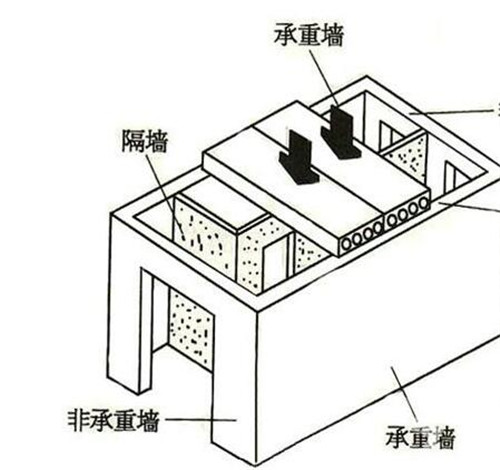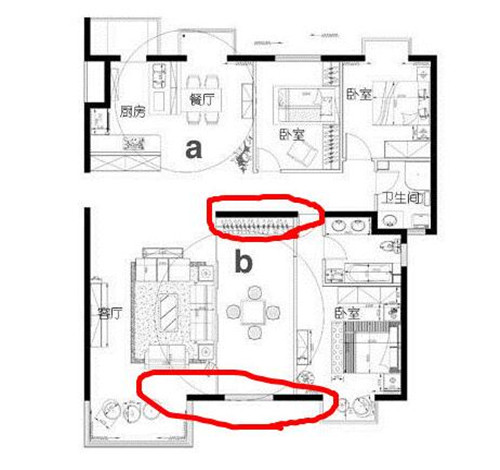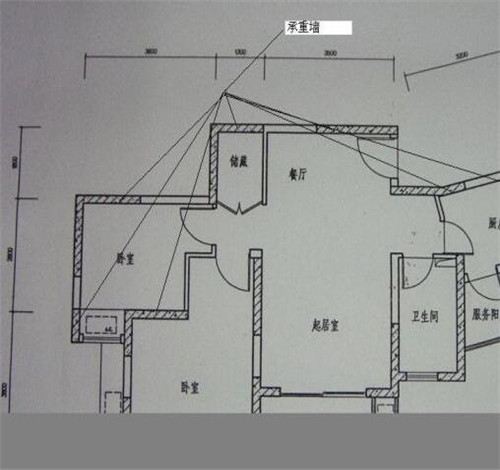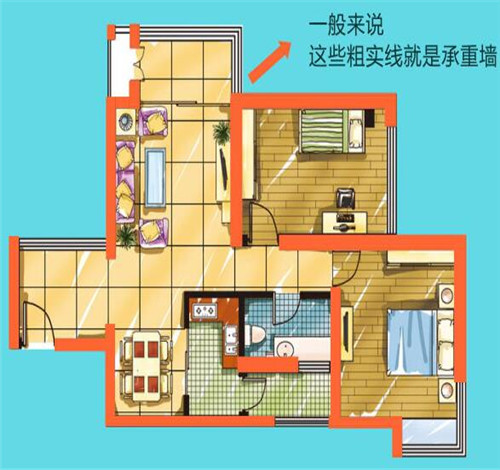When many people are in their homes, they may want to change the structure of the house because the existing functional division cannot satisfy their own residence requirements. Therefore, the demolition of the wall is inevitable. But do you know? However, the wall cannot be demolished. When dismantling a wall, attention must be paid to the need to distinguish between bearing walls and non-load-bearing walls. Bearing walls must not be demolished. Otherwise, there will be great safety risks in their own homes. What is a load-bearing wall ? How to distinguish between bearing wall and non-bearing wall ? Today Xiao Bian came to share with you the knowledge of bearing walls. Let's learn about them together!
What is bearing wall 1

It refers to a type of wall that serves as the supporting body, and it bears the weight of the upper floor. Black walls are usually used to represent the wall in plan view. If we shake it, it is very likely to destroy the entire structure of the house. A non-load bearing wall refers to a wall that does not support the weight of the upper floor. It only serves to separate one room from another. In the drawing, it is a hollow wall. Is there any wall that is not large for the building structure? Impact.
What is bearing wall 2

The thick line in our construction drawing refers to it too. A house wall like a brick-concrete structure is generally a bearing wall, and a non-bearing wall is represented by a thin solid line or a dashed line. In general, brick walls of a brick-concrete structure are load-bearing walls; walls of a frame-structured house are generally not load-bearing walls. Of course, as far as the structure of the house itself is concerned, whether the wall is a load-bearing wall or not should be carefully studied and checked after actual survey on site.
How to distinguish bearing wall and non-bearing wall 1

Then we can judge according to the sound. We can use some hard objects to knock the wall lightly. If the sound is crisp and there is a great echo, it is not a load-bearing wall. On the contrary, if the voice is low and dull, it is the bearing wall. In addition, walls are usually load-bearing walls, and walls shared with neighbors are also. The general non-bearing walls are in bathrooms, storage rooms, kitchens and aisles.
How to distinguish between bearing wall and non-bearing wall?

Secondly, we can also make judgments from the floor plans. For example, the thicker lines and darker colors are usually load-bearing walls, while the lines are washed and the lighter-colored walls are not. We can also judge from its thickness. The load-bearing walls are generally relatively thick, and the thickness is generally about 24 cm. In cold regions, the thickness of the outer wall structure is about 37 cm.
Xiao Bian's words: Before we demolish the wall, we must distinguish between the two types of walls, and make the appropriate signs to avoid the demolition process in the demolition of the wall. And when we are constructing, it is advisable to ask a professional decoration team because they have rich working experience and at the same time need to use materials that must go to buy regular products, so that they can be guaranteed in quality. The above is Xiaobian and everyone to explain what is the bearing wall of knowledge, and hope to give you some reference! More related content, you can pay attention to Qijia information, follow-up will present more exciting content!
What is a bearing wall?
Aluminum Diamond Plate 3003-H22 is easy to fabricate and its raised diamond pattern provides good slip resistance and walking stability.
Application and uses of Aluminum diamond tread plate 3003-H22 bright are: extensive product use as scuff plates, running boards, and mud flaps for fire engines, ambulances, fire trucks, trailers and toolboxes, recreational, and four-wheel-drive vehicles.
Aluminum Diamond Plate
Aluminum Diamond plate sheet
Xiaoxian RuiYi Commercial Trade Co.,Limited , https://www.ryaluplate.com
